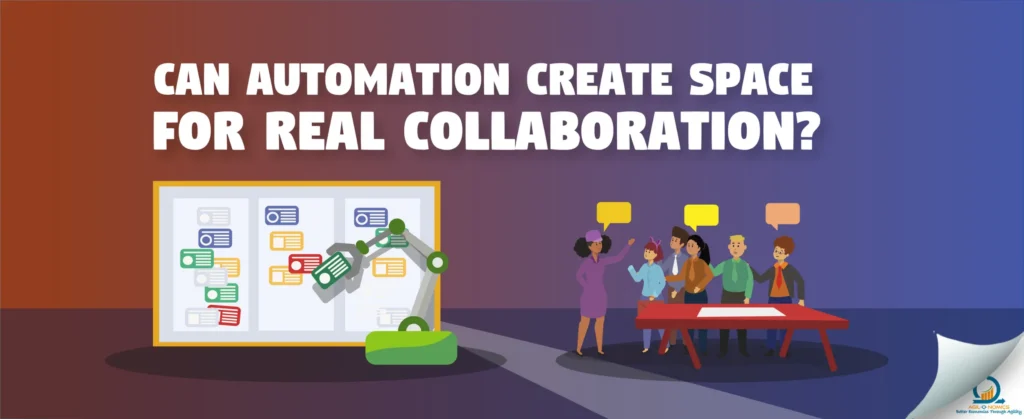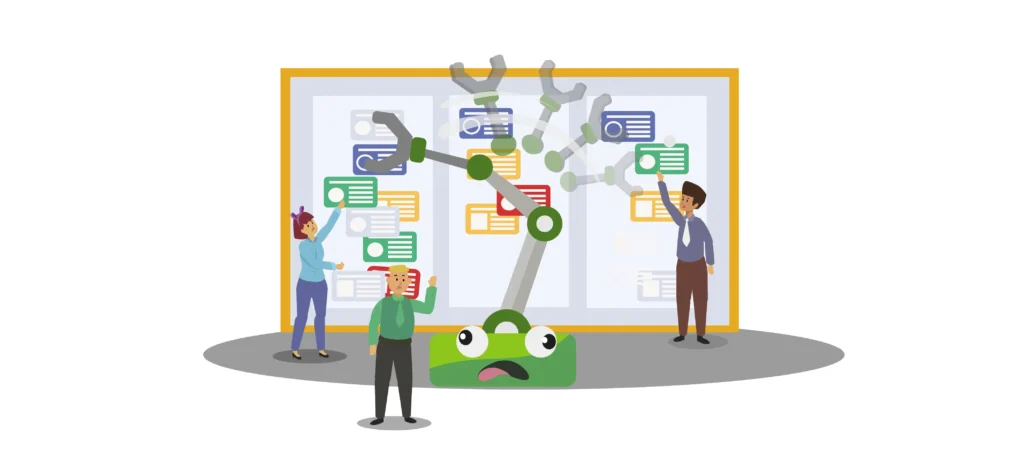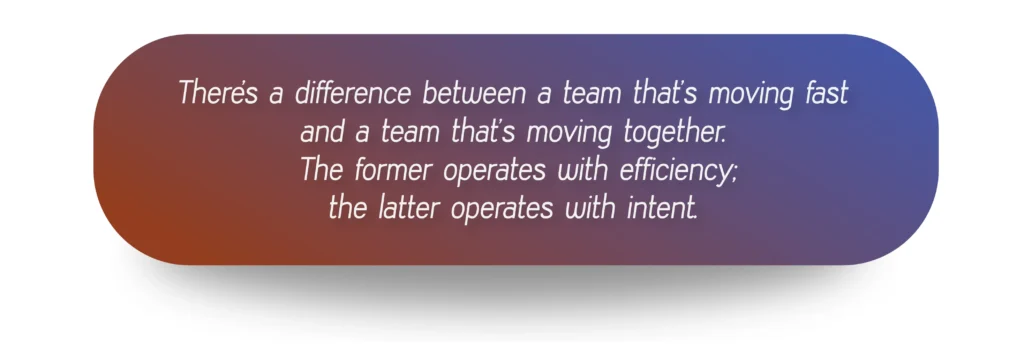
We used to think automation was about efficiency. Fewer clicks, faster handovers, shorter cycles. But somewhere along the way, “automate everything” became the new productivity gospel — and the more we automated, the less we talked.
Now, teams stand surrounded by digital tools that do most of the talking for them — dashboards light up with status, notifications scream updates, and metrics give the illusion of control. Yet, behind all this data movement, the real collaboration — the human conversations that shape value — often goes missing.
So, can automation actually create space for collaboration, or does it risk replacing it entirely?
The Promise That Slipped Through the Cracks
Automation was never the enemy. It was supposed to supercharge teams — to take away the repetitive noise so people could focus on creativity, strategy, and real decision-making.
But that promise only works when technology amplifies intent, not replaces it.
In too many teams, automation turned into another process layer. Instead of freeing people, it made them interpreters of their own tools. They spend more time syncing boards than syncing ideas, and while the system hums perfectly, the purpose starts to fade.
Real collaboration is not about how many automations we can wire up — it’s about how much clarity those automations give us to do better work together.
The Human Signal in the Automated Noise

When every workflow, ticket, and message is instantly processed, the signal can get lost in the speed. We start mistaking activity for alignment.
That’s where leadership and intent matter.
A process that works is not the one that automates the most; it’s the one that lets people see the whole picture. It’s about building systems that invite discussion — not systems that make conversation optional.
If automation tells you that something is delayed, but no one feels responsible to ask why, then collaboration has already failed. Tools can surface the work, but they cannot surface the care behind it.
Technology That Knows When to Step Back
The best use of technology and tools is not to replace our conversations — but to prepare us for them.
Automation should handle the predictable, the measurable, the repetitive — so that people can handle what machines cannot: context, empathy, judgment.
AI can generate summaries, identify dependencies, and highlight risks faster than any project manager ever could. But it cannot replace the nuance of a conversation that resolves a conflict or a brainstorm that sparks innovation.
The future of collaboration is not human versus machine — it’s about designing tools that know when to speak, and when to stay silent..

The Real Question for Teams Today
The question is not how much we can automate, but what should never be automated.
Automation can accelerate output, but it cannot replace the essence of collaboration — the human connection that fuels trust, learning, and shared accountability. The moment every action becomes a workflow and every thought becomes a notification, teams begin to confuse coordination with collaboration. Progress turns into motion. Alignment turns into status. And purpose slowly slips beneath the surface of dashboards and metrics.
There’s a difference between a team that’s moving fast and a team that’s moving together.
The former operates with efficiency; the latter operates with intent.

When automation creates space instead of substitution, something powerful happens. Teams begin to breathe again. They take the time to ask why before how. They rediscover the value of deep discussions — the kind that challenge assumptions, clarify priorities, and build mutual respect. They stop chasing the illusion of constant activity and start building the kind of alignment that endures beyond sprints and deadlines.
In that space, the process evolves naturally.
People learn to trust each other’s judgment, not just the system’s logic. Conversations replace checklists. Ideas emerge between silences, not in chat threads. Collaboration becomes less about updates and more about outcomes — the ones that truly matter.
That’s when productivity stops being mechanical and starts being meaningful.
That’s when technology and tools serve their real purpose — amplifying human intelligence, not replacing it.So, can automation create space for real collaboration?
Yes — but only if we remember that collaboration is not a feature to configure. It’s a relationship to protect.
This post combines the author’s personal thoughts, ideas, and experiences, with some refinement provided by our Agile Bot AgiNomi.

